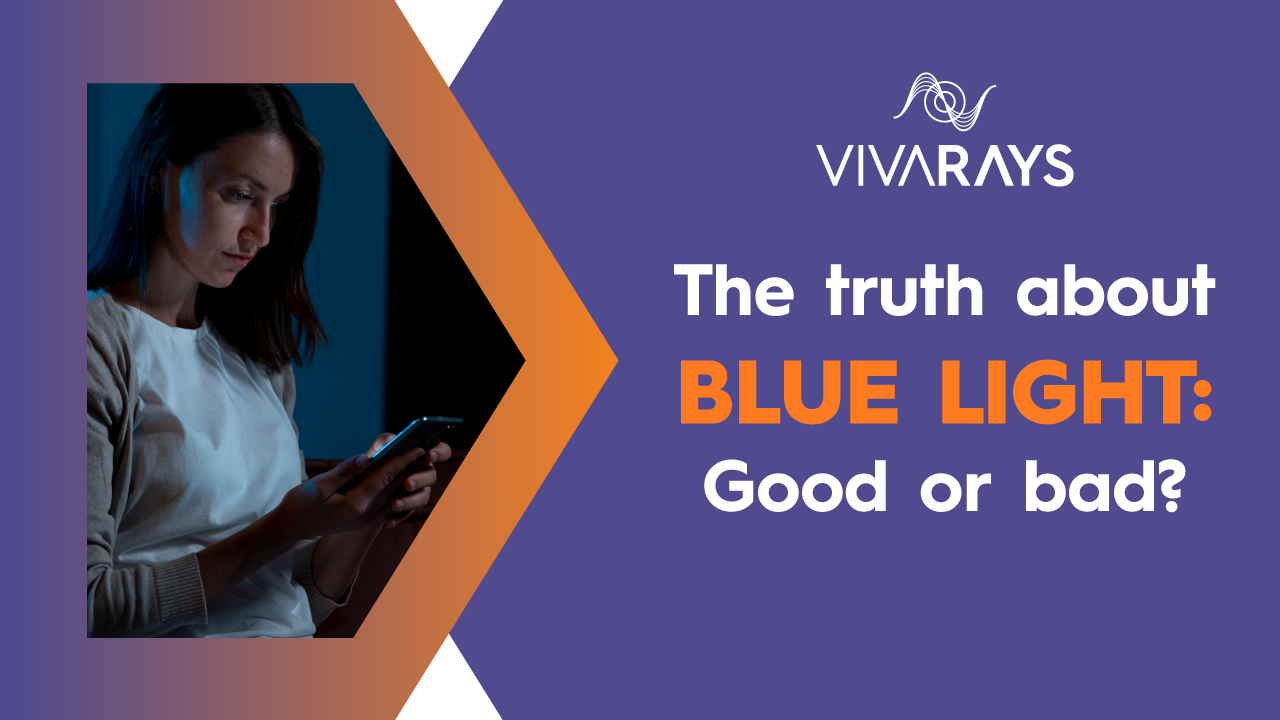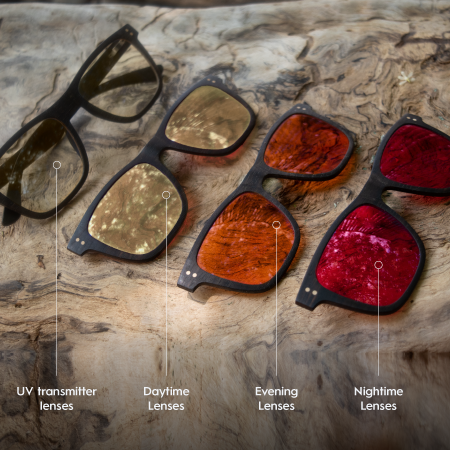The Truth About Blue Light: Good or Bad? | VivaRays Blog

How well we sleep, how rested we feel when we wake up and how healthy we are is governed by a universal code or rhythm. This code is called the circadian rhythm.
This rhythm exists in all animals, humans and plants. We all undergo an inescapable daily change in the environment. The day must become night.
How do plants manage their circadian rhythm?
Plants have light sensors that enable them to anticipate the sun’s position in the sky so that they can turn their leaves in the right direction throughout the day and harness solar energy for photosynthesis. They also drop their leaves down at night when the sun is down and this enables them to optimize energy intake and efficiency. What can we learn from plants?
Well, in order to optimize our energy and efficiency, we need to live in harmony with the law of rhythm by soaking in bright light during the day and being in complete darkness at night. Just like plants, we also have light sensors in the eyes, called melanopsin retinal ganglion cells that are designed to register the sun’s position in the sky.
Blue light is great during the day

Early in the day, our light sensors (melanopsin) sensitivity is low which means we need A LOT of light (100 000 lux +) and in particular sunlight to set our clock mechanism. You might have heard that blue light is bad. This is only a half-truth because the reality is that you need blue light and a lot of it during the day to set your clock mechanisms.
It stimulates our brain more than any other color, elevates our mood and increases our alertness. This is why most daytime blue light blockers are inefficient. In fact, blocking too much blue light during the day will cause circadian disruption and sleep problems.
Blue light is tragic at night

The law of rhythm states that the day must become night. This means that high-frequency blue and green light will not be present in the environment. No matter who you are, where you live and whether you lived 1 million years ago or now, you’re not exempt from this law and your ability to live in harmony with it will determine to a great extent how healthy you are and how well you sleep.
While some people argue that blue light from artificial light sources at night is not bright enough to disrupt our circadian rhythm, the latest discovery in the field of circadian biology proves the opposite and this makes perfect sense because it is governed by the universal law of rhythm.
Dr. Samer Hattar, a Senior Investigator and Chief of the Section on Light and Circadian Rhythms, published a paper in the journal Cell showing that even very little artificial light arriving at the eyes at night is enough to suppress the release of dopamine, the neuromodulator that makes us feel good and motivated. It can also inhibit learning and has all sorts of detrimental effects.
In addition, artificial light at night activates the habenula, also called the disappointment nucleus in the brain because it makes us feel less happy, and much more disappointed and unsatisfied.
Why are small amounts of light detrimental at night?
Well, it’s because our light sensors become very sensitive to light at night so much so that a very little amount will shift our circadian clock in the wrong direction and disturb our sleep.
Those sensors are most sensitive to blue light and much less sensitive to red light. When the sun is out, these light sensors are activated by registering the blue and green light and they signal to our brain that it is daytime, maximizing energy production and enabling us to feel alert, focused and energized. In the absence of blue and green light, those light sensors signal to our brain that it is night time and our body starts preparing for sleep, healing and rejuvenation.
Is exposure to Blue light from screens and LED bulbs great for me during the day?
While blue light during the day is great, it can also be bad. Wondering how? Well, think about it. The blue light you expose yourself to from sunlight is balanced and proportionate with all the other colors of the rainbow.
As you can see in the picture below, the spectrum of sunlight is very different from the spectrum of light emitted by artificial lights.

In contrast, blue light coming from LED bulbs and screens peaks at 455 nm in blue-violet which is very degenerative to the cells and is very deficient in the blue-turquoise, orange and red light which have regenerative properties.
Why did nature include a frequency that is degenerative?
This stimulating effect in nature increases free radical formation just like exercise does. This causes mild and temporary oxidative stress. When this process is balanced, it regulates tissue growth and stimulates the production of antioxidants. What happens when we distort this balance through junk artificial light?
Constant exposure to imbalanced blue artificial light will cause chronic oxidative stress leading to cell and tissues damage as well as inflammation. This explains why overexposure to junk light during the day causes eye strain, headaches and agitation.
What can you do to fix the problem?
1) Watch the sunrise
The sunrise has a very unique spectrum of light that is perfect to wake you up and stimulates the production of neurotransmitters & hormones to maximize your energy levels and mood. This is the best way to start the day!
2) Use high quality daytime blue-light blocking glasses during the day
Vivarays daytime circadian light harmonizing glasses are designed to reduce the intensity of the 455 nm peak to balance the spectrum of light. This allows you to maintain healthy levels of blue light to remain focused, alert & productive without the excessive blue light that creates eye strain, fatigue and headache.
3) Take 5 minutes sun break every 2 hours
Exposing your eyes & skin to natural sunlight multiple times during the day will help to reset your circadian rhythm to the correct time.
4) Download the Iris Software on your computer.
This software allows you to reduce the amount of toxic blue light emitted by the screen of your computer.
5) Watch the sunset
When we watch the sunset, the melanopsin cells signal to the central clock that it is the end of the day. A study that was published showed that viewing sunset adjusts down our retinal sensitivity. This means that even if you are exposed to artificial light at night, it will decrease the amount of melatonin suppression.
6) Wear evening blue light blocking glasses after sunset
Vivarays evening lenses are designed to block all blue and high frequency green light while keeping just enough low frequency green light to keep you awake and able to socialize and do your daily tasks.
7) Wear night times blue light blocking glasses one to two hours before bed
Vivarays night time lenses block all blue and green light and decrease the brightness by 15 times, enabling your brain to understand that it is nighttime and optimizing our melatonin production.
8) Place your night time lighting lower in your physical environment
Our melanopsin is located in the bottom half of the retina. We have a lens in front of our retina and because of the optic of lenses, there is an inversion effect of the visual image. This means that those cells are most sensitive to overhead lighting.
This makes perfect sense because we have evolved with overhead sunlight. Keeping your sources of light at night near the floor or on a table will have less detrimental effects on your health & sleep than overhead lights.




Leave a comment